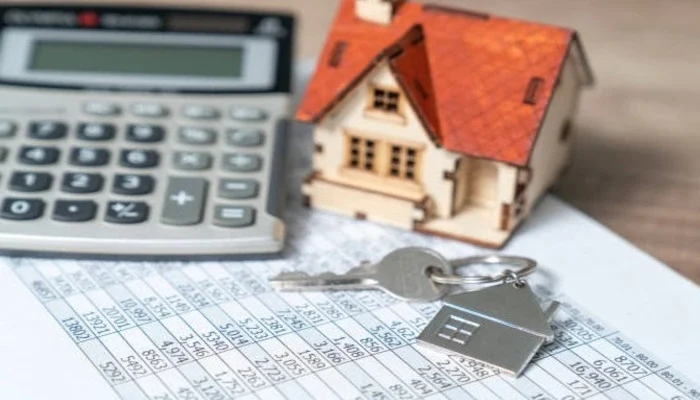Applying for a home loan can be a complicated process, with various financial terms and calculations to get your head around. One of the most important metrics lenders use when deciding whether to approve a home loan is the Loan to Value Ratio, or LVR. This ratio gives lenders a clear understanding of how much you need to borrow compared to the value of the property you’re purchasing.
LVR meaning “Loan to Value Ratio” is a percentage that expresses the size of your loan in relation to the appraised value of the property. For instance, if your desired property is valued at $500,000 and you need to borrow $400,000, your LVR would be 80%. Knowing how to calculate your LVR is crucial, as it affects not only your loan eligibility but also the interest rate you’re offered and whether you need to pay for lender’s mortgage insurance (LMI). This guide will take you through a simple step-by-step process to calculate your LVR ratio so you can better understand your position before applying for a loan.
Step 1: Understand the Components of LVR
Before diving into the calculations, it’s essential to understand what makes up your LVR. Essentially, the LVR is determined by two main components:
- The Loan Amount: This is the whole amount of money the lender is lending you. It does not include any payments or savings you make.
- The Property Value: This is the value of the property that you’re purchasing, as determined by an independent valuation. Note that this might not always match the sale price, as lenders often use their own valuation to assess the property’s value.
The LVR calculation helps lenders determine how much risk they’re taking on. A high LVR indicates that you have less equity in the property, which makes the loan riskier for the bank.
Step 2: Calculate the worth of the property.
The first step in calculating your LVR ratio is to determine the value of the property you’re purchasing. It’s important to note that the property value used in LVR calculations is often based on a valuation conducted by the lender or an independent valuer, not necessarily the price you’re paying for the property.
For instance, if you’re buying a house for $500,000, the lender may commission their own valuer to assess its market value. In some cases, the valuation might be lower or higher than the sale price. For the purpose of calculating your LVR, always use the value provided by the lender’s valuation.
Step 3: Identify How Much You Need to Borrow
Next, figure out how much loan money you need. This will be the total loan amount you’re applying for. It’s essentially the purchase price minus your deposit.
For example, if the property’s purchase price is $500,000 and you have saved a deposit of $100,000, you will need to borrow $400,000. Keep in mind that there could be other costs associated with the purchase, such as stamp duty and legal fees, which might require additional borrowing. However, these extra costs are generally not included in the LVR calculation.
Step 4: Use the LVR Formula
Now that you have both the property value and the loan amount, you can calculate your LVR using the following formula:
LVR=(Loan AmountProperty Value)×100\text{LVR} = \left( \frac{\text{Loan Amount}}{\text{Property Value}} \right) \times 100 LVR=(Property ValueLoan Amount)×100
Let’s use the previous example:
- Loan Amount: $400,000
- Property Value: $500,000
LVR=(400,000500,000)×100=80%\text{LVR} = \left( \frac{400,000}{500,000} \right) \times 100 = 80\%LVR=(500,000400,000)×100=80%
In this case, your LVR is 80%. This means you’re borrowing 80% of the property’s value, and your deposit covers the remaining 20%.
Step 5: Understand the Implications of Your LVR
After calculating your LVR, it’s crucial to understand what the number means for your borrowing potential. An LVR of 80% or below is generally considered ideal by lenders. If your LVR is 80% or less, you’re less likely to need to pay for Lender’s Mortgage Insurance (LMI), which can be an additional cost to protect the lender if you default on the loan.
If your LVR is above 80%, you may still be able to get a loan, but the lender might charge you a higher interest rate and require you to take out LMI. An LVR above 90% generally makes it even more challenging to secure a loan, and any loan offers you receive might come with higher interest rates due to the increased risk.
Step 6: Strategies to Lower Your LVR
If your calculated LVR is higher than you’d like, there are several strategies you can use to lower it, which can improve your borrowing terms:
- Save a Larger Deposit: By increasing your deposit, you reduce the amount you need to borrow. For example, if you save an additional $50,000, reducing the loan amount to $350,000, your LVR on a $500,000 property drops to 70%.
- Consider a Less Expensive Property: Another effective way to lower your LVR is to choose a more affordable property. If the property’s value is lower, your deposit will account for a larger percentage, reducing the LVR.
- Increase the Property Value: If you’re refinancing, you might be able to lower your LVR by increasing the property’s value. This can be done through strategic renovations or improvements that boost the market value of the property.
Step 7: Recalculate Your LVR if Circumstances Change
It’s a good idea to recalculate your LVR if any major aspects of your financial situation change. For example, if property values fluctuate, if you manage to save more for a deposit, or if you decide to buy a different property, you’ll want to know how these factors affect your LVR. Keeping a close eye on your LVR helps you better prepare for the home loan application process and gives you more control over the costs associated with borrowing.
Benefits of Having a Lower LVR
A lower LVR comes with multiple benefits. Firstly, you are more likely to secure a home loan approval with more competitive interest rates. Lenders view lower LVRs as less risky, which means they may be willing to offer you better terms and reduced fees. Additionally, having an LVR of 80% or less means you won’t have to pay LMI, which can save you thousands of dollars.
Conclusion
Calculating your LVR ratio is an essential step in preparing for a home loan application. Understanding the LVR meaning, or Loan to Value Ratio, is not just about getting approved for a mortgage; it also influences the interest rate you’ll receive and any additional costs you may incur, such as lender’s mortgage insurance. By following this guide to determine your LVR, you can better understand your borrowing capacity, identify potential financial gaps, and take proactive steps to improve your position.
Whether it’s by saving a larger deposit, choosing a less expensive property, or improving the value of your current home, knowing how to manage your LVR can put you in the best possible financial position when dealing with lenders. Taking these steps can lead to lower costs, more favourable loan terms, and a smoother path to homeownership.
Drain Cleaning Business: Clearing the Path to a Healthy Home









Comments